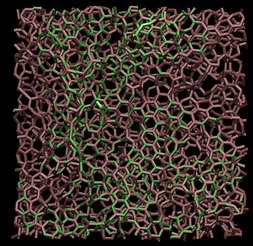BEHNOOSH SATTARI BABOUKANI
Behnoosh's research focuses on the study of surface phenomena, with a specific focus on synthesizing, characterizing, and investigating the tribological behavior of thin films and two-dimensional (2D) materials. Her work extends to scrutinizing material mechanics across various scales, and she specializes in comprehending nanoscale forces to pioneer innovative and practical materials for applications in tribology, environmental, and biomedical engineering, within the multidisciplinary realm of science and engineering.
Research Overview
Exploring Ultrathin Amorphous Carbon (a-C) Films: Fabrication and Characterization
This research centers on the fabrication and characterization of ultrathin amorphous carbon (a-C) films. Carbon-based nanomaterials (CBN) possess the potential for multifunctional properties, including distinctive tribomechanical characteristics and exceptional thermal stability. These a-C films are applied in various applications, such as protective overcoats for electronic devices, enhancing surface protection. The objective is to optimize the fabrication parameters and post-processing annealing conditions to convert a-C structures into defect-free few-layer graphene structures from a stack of catalyst layers and ultrathin a-C films.



Nanotribological Characteristics of Novel and Complex Two-dimensional (2D) Layers as Next-Generation Lubricants
The emergence of 2D crystalline materials has revolutionized next-generation lubricants for various environments. These materials, when used as solid lubricants or additives in base oils, significantly reduce friction coefficients, often by over an order of magnitude compared to direct contact. The adaptability of their chemistry and functionalities allows customization for compatibility with different oils and solvents, making them useful as lubricant additives. This ongoing research aims to innovate novel 2D structures and explore their potential as revolutionary lubricants, contributing to energy conservation initiatives.

2D Materials and Liquid Molecular Dynamics: A New Frontier in Drug Delivery
2D materials have risen to prominence as versatile carriers in smart drug delivery systems (SDDS). Within the context of a submerged contact interface, the arrangement of liquid molecules notably diverges from their behavior in bulk liquid. In particular, liquid molecules confined near the atomically flat surfaces of 2D layers tend to form layered structures. This transformation is driven by the increased concentration of solvent molecules at the contact interface, which, in turn, impacts interaction energies, shear-activation distances, and the energy threshold for slip initiation. Leveraging atomic force microscopy (AFM) aids in assessing the arrangement of liquid molecules within nanotransporters and provides a means to control solvent flow at the interface.

Mechanics of Biological Samples (Collaborative research)
Scanning probe microscopy (SPM) is a technique well-suited for characterizing the mechanical properties of soft biological tissues. At the tissue and organ levels, alterations in mechanical properties are intricately linked to disease and physiological processes. Previously, in a collaborative effort, the mechanical characteristics of healthy, diseased, and treated mouse lung parenchyma strips were evaluated using the force modulation method in AFM.
